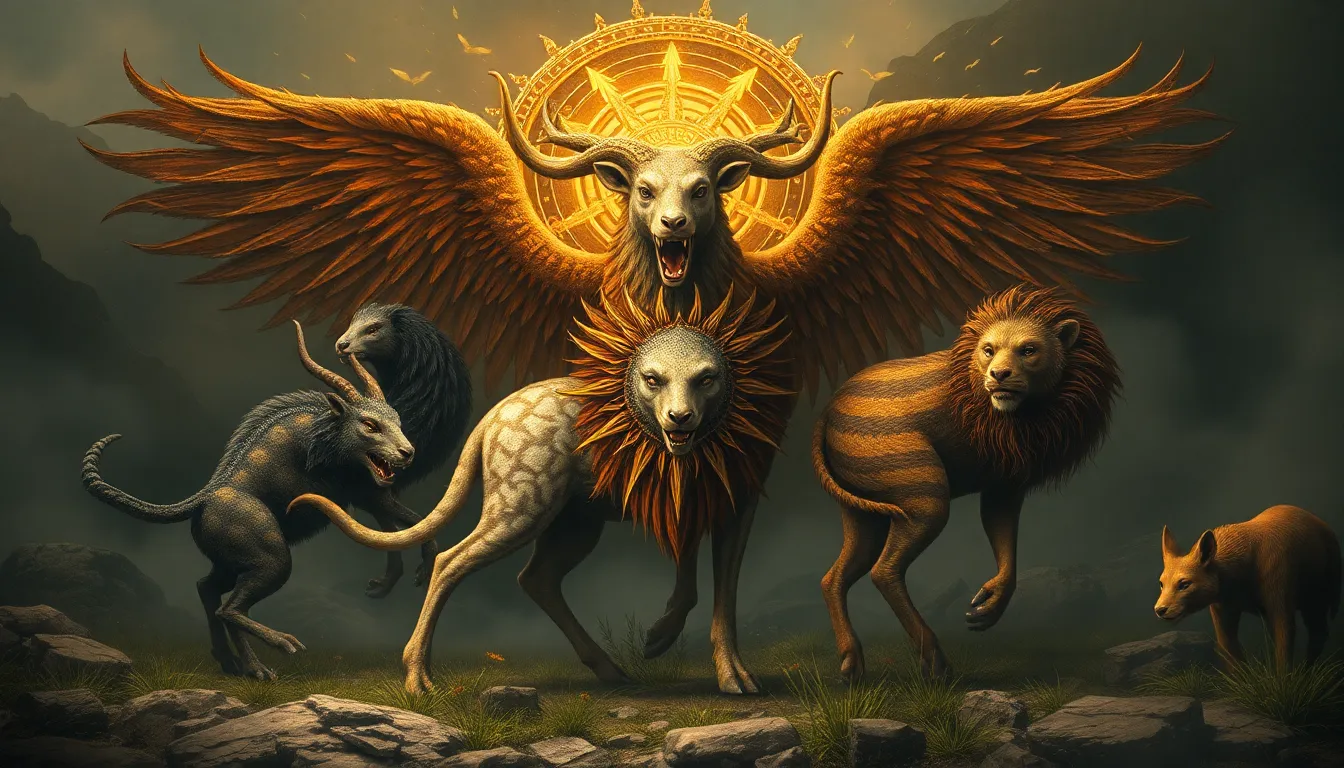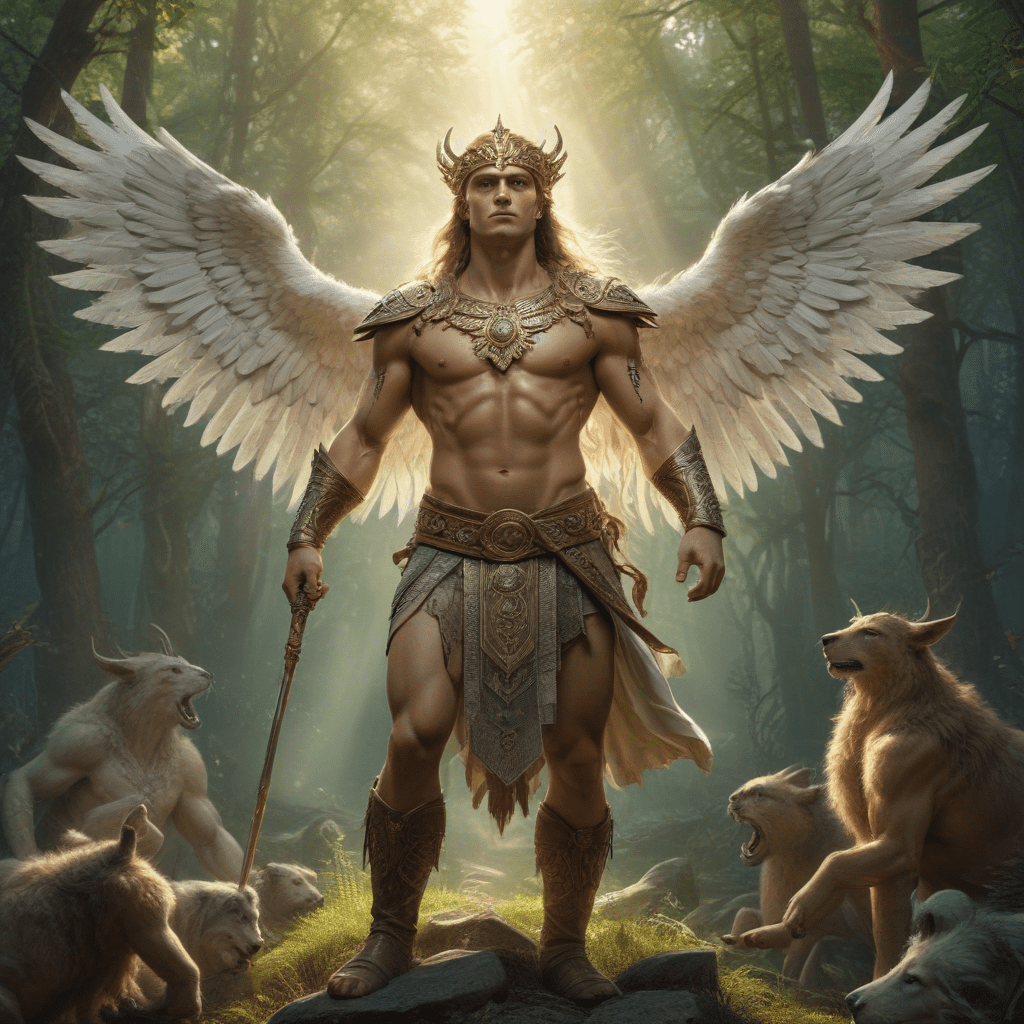Sacred Animals of the Americas: Legends from North to South
I. Introduction
The concept of sacred animals is deeply rooted in the indigenous cultures of the Americas, where these creatures are revered not only for their physical attributes but also for their spiritual significance. Sacred animals often embody the beliefs, values, and teachings of various tribes, serving as powerful symbols in storytelling and mythology.
In indigenous narratives, animals frequently represent important lessons about life, nature, and the interconnectedness of all beings. This article aims to explore the legends surrounding sacred animals from North to South America, shedding light on their cultural importance and the wisdom they impart.
II. The Role of Sacred Animals in Indigenous Beliefs
Indigenous cultures across the Americas often embrace animism and totemism as foundational beliefs. Animism attributes spiritual essence to all living things, while totemism connects specific animals to clans or tribes, signifying identity and lineage.
Animals in these cultures are seen as messengers of the spirit world, embodying spiritual messages and cultural values. They serve as guides, offering insights into the natural world and human existence.
- Spiritual Messages: Animals often convey lessons about morality, survival, and the importance of community.
- Cultural Values: They reflect the values held by indigenous peoples, such as respect for nature and the importance of harmony.
- Connection with Nature: The relationship between humans and animals is viewed as symbiotic, emphasizing the need to live in balance with the environment.
III. North American Sacred Animals
A. The Eagle: Symbol of Freedom and Spiritual Connection
The eagle is a revered symbol among many Native American tribes, representing freedom, strength, and a deep spiritual connection to the divine. In Lakota culture, the eagle is considered a messenger to the Creator, and its feathers are used in sacred ceremonies.
Legends surrounding the eagle often highlight its role as a protector and a guide. For instance, the Navajo believe that the eagle brings good fortune and protects the people from harm. Rituals involving eagle feathers are common, reflecting the bird’s significance in prayers and healing ceremonies.
B. The Wolf: A Symbol of Loyalty and Community
The wolf holds a prominent place in the mythology of various tribes, such as the Ojibwe and Apache. Often seen as a teacher, the wolf is associated with loyalty, family ties, and social structure. In Ojibwe legends, the wolf is a guide who teaches the importance of cooperation and community.
Myths about the wolf often illustrate its role in maintaining balance within nature, emphasizing the importance of social bonds among both animals and humans. The wolf’s howling is seen as a call to unite and protect the pack.
C. The Bear: Protector and Healer
Bears are regarded as powerful symbols of strength and courage in many Native American cultures. They are often associated with healing and protection. Legends about the bear frequently highlight its role as a guardian spirit, offering guidance and support in times of need.
In spiritual practices, the bear is seen as a teacher of introspection and self-awareness. The bear’s hibernation is interpreted as a metaphor for the need for rest and reflection, emphasizing the cyclical nature of life.
IV. Central American Sacred Animals
A. The Jaguar: Power and the Underworld
The jaguar is a powerful symbol in both Mayan and Aztec cultures, representing strength, the underworld, and the afterlife. In Mayan mythology, the jaguar is associated with the night and the spiritual world, often depicted as a guardian of the underworld.
Jaguar motifs are prevalent in ancient art and architecture, illustrating the animal’s significance in both mythology and daily life. Its fierce nature embodies the duality of life and death, making it a central figure in many creation stories.
B. The Quetzal: Beauty and Freedom
The quetzal is celebrated in Mesoamerican legends as a symbol of beauty and freedom. Known for its vibrant plumage, the quetzal is often associated with the divine and the soul. In various myths, the bird represents the spirit of freedom and the connection to the heavens.
Its role in representing the soul is particularly significant in rituals, where its feathers are used to adorn sacred objects, signifying the presence of the divine.
C. The Serpent: Transformation and Duality
The serpent, especially the feathered serpent known as Kukulkan or Quetzalcoatl, holds a prominent place in Mesoamerican mythology. This deity embodies transformation, duality, and the connection between earth and sky.
In rituals, the serpent symbolizes the cyclical nature of life and death, representing rebirth and renewal. Its imagery is deeply embedded in the cosmology of ancient civilizations, illustrating the importance of balance in the universe.
V. South American Sacred Animals
A. The Llama: Strength and Sustenance
In Andean societies, the llama is not only a source of sustenance but also a symbol of strength and endurance. Revered as a vital part of daily life, llamas are associated with agricultural practices and the fertility of the land.
Legends surrounding the llama in Incan mythology often highlight its role as a companion and protector, showcasing the deep bond between humans and these animals in their daily lives.
B. The Condor: Spiritual Messenger and Connection to the Heavens
The condor is a significant figure in Andean folklore, often viewed as a spiritual messenger that connects the earth to the heavens. Its ability to soar at great heights symbolizes freedom and the pursuit of higher knowledge.
In rituals, the condor is seen as a guide for the soul, leading the deceased to the afterlife. Its presence is interwoven with environmental symbolism, reflecting the delicate balance of nature and the importance of conservation.
C. The Anaconda: Power of the Water and Earth
The anaconda holds a powerful place in the myths of Amazonian tribes, often regarded as a guardian of the waters and the earth. Its immense size and strength symbolize the primal forces of nature.
Legends about the anaconda frequently illustrate its connection to the creation of the world, embodying the power of transformation and the mysteries of the natural world. It serves as a reminder of the importance of respecting and protecting the environment.
VI. Conclusion
The sacred animals of the Americas provide profound insights into the beliefs and values of indigenous cultures. From the eagle’s spiritual connection to the bear’s protective nature, these creatures embody the teachings of their respective peoples.
Through storytelling and mythology, the significance of these animals is preserved, reminding us of the deep relationship between humans and the natural world. As we explore these legends, we gain a greater understanding of the wisdom that indigenous cultures have to offer, enriching our appreciation for the sacred connections shared with the animal kingdom.



